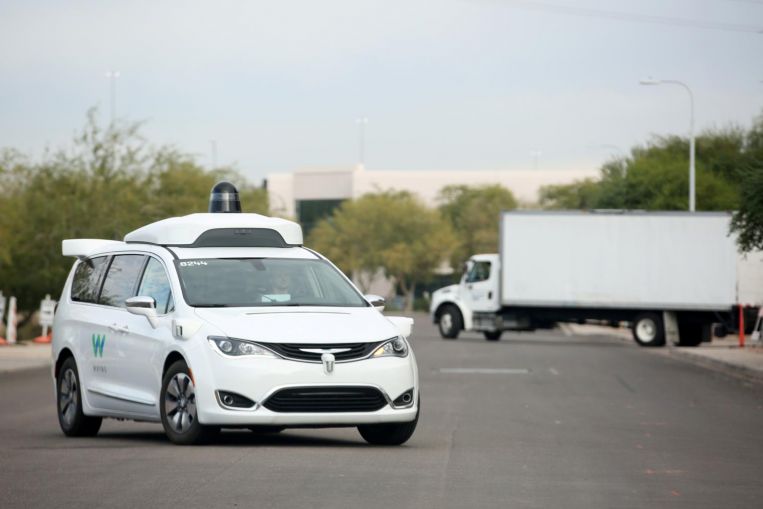(NYTIMES) – It was seven years ago when Waymo discovered that spring blossoms made its self-driving cars get twitchy on the brakes. So did soap bubbles. And road flares.
New tests, in years of tests, revealed more and more distractions for the driverless cars. Their road skills improved, but matching the competence of human drivers was elusive. The cluttered roads of America, it turned out, were a daunting place for a robot.
The wizards of Silicon Valley said people would be commuting to work in self-driving cars by now. Instead, there have been court fights, injuries and deaths, and tens of billions of dollars spent on a frustratingly fickle technology that some researchers say is still years from becoming the industry’s next big thing.
Now the pursuit of autonomous cars is undergoing a reset. Companies like Uber and Lyft, worried about blowing through their cash in pursuit of autonomous technology, have tapped out. Only the most deep-pocketed outfits such as Waymo, a subsidiary of Google’s parent company Alphabet, motor-vehicle industry giants, and a handful of start-ups are managing to stay in the game.
Late last month, Lyft sold its autonomous vehicle unit to a Toyota subsidiary called Woven Planet in a deal valued at US$550 million (S$730 million). Uber offloaded its autonomous vehicle unit to another competitor in December. And three prominent self-driving start-ups have sold themselves to companies with much bigger budgets over the past year.
The tech and car giants could still toil for years on their driverless car projects. Each will spend an additional US$6 billion to US$10 billion before the technology becomes commonplace – some time around the end of the decade, according to estimates from Pitchbook, a research firm that tracks financial activity. But even that prediction might be overly optimistic.
“This is a transformation that is going to happen over 30 years and possibly longer,” said Mr Chris Urmson, an early engineer on the Google self-driving car project before it became the Alphabet business unit called Waymo. He is now chief executive of Aurora, the company that acquired Uber’s autonomous vehicle unit.
So what went wrong? Some researchers would say nothing – that is how science works. You cannot entirely predict what will happen in an experiment. The self-driving car project just happened to be one of the most hyped technology experiments of this century, occurring on streets all over the country and run by some of its most high-profile firms.
That hype drew billions of dollars of investments, but it set up unrealistic expectations.
In 2015, the electric carmaker Tesla’s billionaire boss Elon Musk said that fully functional self-driving cars were just two years away. More than five years later, Tesla cars offered simpler autonomy designed solely for highway driving. Even that has been tinged with controversy after several fatal crashes (which Tesla blamed on misuse of the technology).
Perhaps no company has experienced the turbulence of driverless car development more fitfully than ride-hailing firm Uber. After poaching 40 robotics experts from Carnegie Mellon University and acquiring a self-driving truck start-up for US$680 million in stock, Uber settled a lawsuit from Waymo, which was followed by a guilty plea from a former executive accused of stealing intellectual property. A pedestrian in Arizona was also killed in a crash with one of its driverless cars. In the end, Uber essentially paid Aurora to acquire its self-driving unit.
But for the most deep-pocketed companies, the science, they hope, continues to advance one improved ride at a time. In October, Waymo reached a notable milestone: It launched the world’s first “fully autonomous” taxi service. In the suburbs of Phoenix, Arizona, anyone can now ride in a minivan with no driver behind the wheel. But that does not mean the company will immediately deploy its technology in other parts of the United States.
Mr Dmitri Dolgov, who recently became Waymo’s co-chief executive after the departure of Mr John Krafcik, an automobile industry veteran, said the company considers its Arizona service a test case. Based on its Arizona experience, he said, Waymo is building a new version of its self-driving technology that it will eventually deploy in other geographies and other kinds of vehicles, including long-haul trucks.
The suburbs of Phoenix are particularly well suited to driverless cars. The streets are wide, there are few pedestrians and there is almost no rain or snow. Waymo also supports its autonomous vehicles with remote technicians and roadside assistance crews who can help get the cars out of a tight spot, either via the Internet or in person.
Self-driving technology may not be nimble enough just yet to reliably handle the variety of situations that human drivers encounter each day. But Uber and Lyft are not entirely giving up on driverless cars. Even though it may not help the bottom line for a long time, they still want to deploy autonomous vehicles by partnering with the companies that are still working on the technology. Lyft now says autonomous rides could arrive by 2023.
“These cars will be able to operate on a limited set of streets under a limited set of weather conditions at certain speeds,” said Lyft executive Jody Kelman. “We will very safely be able to deploy these cars, but they won’t be able to go that many places.”
Join ST’s Telegram channel here and get the latest breaking news delivered to you.
Source: Read Full Article
